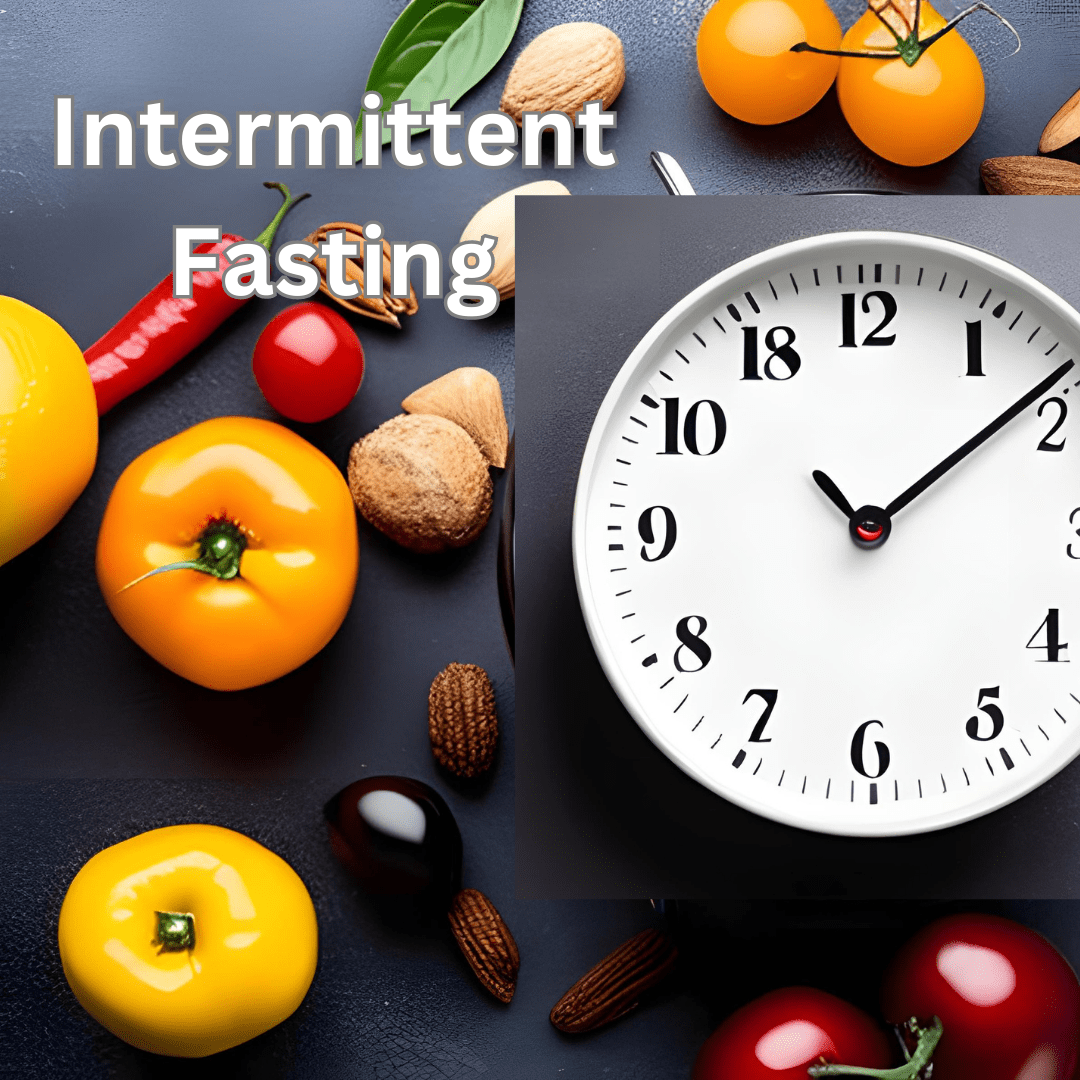
About Intermittent Fasting for fat loss guide
Intermittent fasting has become a popular buzzword in the health and wellness world, with many claiming it as a game-changer for weight loss and overall health. But what exactly is intermittent fasting, and how does it work? In this article, we’ll explore the science behind intermittent fasting and discuss its different types, benefits for health and weight loss, potential risks and side effects, and tips for getting started. We’ll also dive into how intermittent fasting can impact exercise, hormonal and mental health, anti-aging, and immune system health.
Whether you’re new to intermittent fasting or looking to learn more, this intermittent fasting for fat loss guide will provide all the information you need to make informed decisions about your health and wellness.
What is Intermittent Fasting?
Intermittent fasting is a trendy way of eating that has gained popularity in recent years. However, it has been around for thousands of years. Many religions do fasting regularly and have found spiritual benefits. It’s not a diet, but rather a pattern of eating where you alternate periods of eating with periods of fasting. Here’s what you need to know about intermittent fasting.
- Intermittent fasting is a pattern of eating, not a diet.
- It involves alternating periods of eating with periods of fasting.
- There are different types of intermittent fasting, including the 16/8 method, the 5:2 diet, and alternate-day fasting.
- During the eating periods, you can eat whatever you want, but it’s important to focus on healthy, whole foods.
- During the fasting periods, you can drink water, herbal tea, or a non-caloric electrolyte supplement like salt, but you should avoid any calorie-containing drinks or foods to maximize fasting benefits.
- Intermittent fasting has many potential health benefits, including weight loss, improved insulin sensitivity, and decreased inflammation as shown in studies.
- Intermittent fasting may not be suitable for everyone, especially those with a history of eating disorders, pregnant or breastfeeding women, and those with certain medical conditions.
- It’s essential to speak to your doctor before starting intermittent fasting.
Examples of types of intermittent fasting
Intermittent fasting is a way of eating that can be tailored to your lifestyle. Here are some examples of how it can be incorporated into your daily routine:
- 16/8 method: This involves eating during an eight-hour window and fasting for the remaining 16 hours. For example, you could eat from 12 pm to 8 pm and fast from 8 pm to 12 pm the next day.
- 5:2 diet: This involves eating normally for five days of the week and restricting calorie intake to 500-600 calories for the other two non-consecutive days.
- Alternate-day fasting: This involves alternating between eating normally one day and fasting the next.
- OMAD (one-meal-a-day): This involves eating every 24 hours, or one really large meal per day.
Intermittent fasting is a pattern of eating that involves alternating periods of eating and fasting. It has many potential health benefits, but it’s essential to speak to your doctor before starting. If you’re interested in trying intermittent fasting, start with a method that works for you and incorporate healthy, whole foods into your diet during the eating periods.
The science behind intermittent fasting
Intermittent fasting is a way of eating that can help you lose weight. When you fast, your body starts to use stored fat for energy instead of glucose. This can lead to weight loss over time.
Normally, our body gets energy from glucose in our blood. But when we fast, our body first uses stored glucose (called glycogen) in our liver and muscles. After 24 hours of fasting, glycogen runs out, and our body starts using fat stores for energy instead.
This change in our body’s metabolism is mainly dependent on the use of triglyceride stores in our fat cells. The triglycerides break down into ketone bodies and glucose, which our body tissues can use for energy.
As fasting continues, our body becomes more dependent on ketone bodies for energy and less dependent on glucose.
Effects on hormones
Fasting boosts the production of growth hormone (GH), which helps to burn fat for fuel and maintain muscle and bone density. GH is also important for metabolism, weight loss, and muscle growth. When you fast, the levels of insulin and glucose go down while hormones like GH and adrenaline go up. This creates an environment that supports fat burning and enhanced cellular cleansing (autophagy). GH helps to preserve muscle mass during fasting, and studies have found that fasting for 24 hours significantly increases GH levels.
More beneficial effects
Intermittent fasting can also help your body become more sensitive to insulin, which is a hormone that controls blood sugar levels. This can lower your risk of developing type 2 diabetes. Amazingly, this benefit is regardless of whether someone lost weight or not, as shown in this study.
Inflammation is a key factor in many chronic diseases, and intermittent fasting has been shown to reduce inflammation in the body. This means that intermittent fasting may help prevent diseases like heart disease, cancer, and Alzheimer’s disease.
Studies, like one in 2020, in animals have shown that intermittent fasting can increase lifespan, although more research is needed to see if this holds true in humans.
Fasting has also been shown to increase the production of a protein called brain-derived neurotrophic factor (BDNF), which is involved in learning and memory. This means that intermittent fasting may help improve brain function.
Fasting has also shown in animal studies to help prevent/decrease cancer. Human studies have started, but this is an area of intense research that we’ll be learning more about in the future.
Studies show cellular repairs increase. These cellular repairs happen in a process called autophagy. Autophagy is a natural process that helps our cells stay healthy. It removes damaged parts and bad proteins, making way for new ones. It’s like taking out the trash to keep your room clean.
Side effects
Some of the side effects of intermittent fasting include:
- Feeling sick
- Overeating
- Metabolic trouble
- Weight loss
Depending on the length of the fasting period, people may experience:
- Headaches
- Lethargy
- Crankiness
- Constipation
- Nausea
- Bloating
- Sleep disturbances or trouble falling asleep
Note that just because this can happen, doesn’t mean it will happen to you. And, as noted, there are things you can do to mitigate the effects too. One of the most common ways to help is to make sure you drink enough water and electrolytes (like a pinch of salt in your water).
How to get started
As you can imagine, an intermittent fasting for fat loss guide would help to have steps to get started if it’s new to you. Here are some steps to help you get started:
- Consider & choose the amongst different types of Intermittent Fasting — There are various types of intermittent fasting, such as alternate-day fasting, time-restricted feeding, and 5:2 fasting. Each type involves a different fasting and eating schedule, so it’s important to choose one that best suits your lifestyle. For example, if you choose the 16/8 time-restricted feeding method, you will fast for 16 hours and eat within an 8-hour window every day.
- Start Slow — If you’re new to intermittent fasting, it’s best to start slow. For example, you can try 12-hour fasts and gradually increase your fasting period as you become more comfortable with the practice.
- Stay Hydrated — Staying hydrated is important when fasting, so make sure you drink plenty of water (along with a pinch of salt) throughout the day. You can also drink herbal teas, lemon water, and apple cidar vinegar to help suppress your appetite.
- Focus on nutrient-dense foods — When it’s time to eat, make sure you focus on nutrient-dense foods that will keep you full and energized throughout the day. Choose foods that are high in fiber, protein, and healthy fats, such as fruits, vegetables, nuts, and lean protein sources.
- Listen to your body — Intermittent fasting is not for everyone, so it’s important to listen to your body and pay attention to how it responds to fasting. If you feel dizzy or nauseous, it may be a sign that you need to adjust your fasting schedule or eat more nutrient-dense foods (when you aren’t fasting).
Be patient. It’s ok if it takes time to see results. That is totally normal and healthy.
Exercise helps see additional fat loss results
In a 12-week weight loss trial, obese subjects were randomly assigned to one of four groups for 12 weeks: 1) a combination of alternate day fasting and endurance exercise, 2) alternate day fasting only, 3) endurance exercise only, or 4) control. The combination group also saw a decrease in body fat and waist circumference, while retaining lean muscle mass. Additionally, the combination group experienced a decrease in LDL cholesterol and an increase in HDL cholesterol, both of which are indicators of heart disease risk.
Researchers in that study found that combining modified fasting with exercise led to a greater weight loss (6.5%) compared to doing fasting or exercise alone. Doing only fasting resulted in a weight loss of 3.2% and only exercise resulted in a weight loss of 1.1%.
Note that intermittent fasting also results in lost muscle if people don’t eat enough protein when they are not fasting. This is a common mistake people make (including medical professionals designing studies).
Exercising while fasting
Two things to consider:
1. Aerobic exercise (including walking) and high intensity interval training are good at the beginning of a fast. The body can use the up glucose in the blood and glycogen stores in the muscles faster. Additionally, your workout will be higher quality.
2. Anaerobic exercise, like strength training, is good to do right before you plan on ending your fast. This is because muscle becomes damaged during this type of exercise. The body becomes receptive to accelerated protein synthesis to build lean muscle. So if you choose to do this type of exercise, make sure to have at least 30 grams of complete protein right after your workout. Additionally, mix fast/slow absorption rate proteins–like whey protein is fast and eggs are slow. Finally, you should aim to have around .5 to .8 grams of protein per lb (or 1.2-1.7g per kg) per day according to the American College of Sports Medicine.
Listen to your body. Stop exercise if you feel unwell during exercise. As noted earlier, start slow and work your way up as you can adapt.
Impacts to meal planning
Maintaining a healthy diet is tough even though it’s easy to do.
The biggest challenge is preparing and cooking healthy meals.
Luckily, intermittent fasting simplifies meal preparation since you’ll need to plan, cook, and clean up for fewer meals than before.
This is why many people love intermittent fasting as it improves health and simplifies life simultaneously, particularly among those who enjoy life-hacking.
Intermittent fasting is good for many people to try
Intermittent fasting is a popular pattern of eating that involves alternating periods of eating and fasting. It has many potential health benefits, including weight loss, improved insulin sensitivity, decreased inflammation, and increased lifespan. However, it may not be suitable for everyone, especially those with certain medical conditions. Before starting intermittent fasting, it is important to speak to a doctor.
Different types of intermittent fasting can be tailored to an individual’s lifestyle, and it is crucial to incorporate healthy, whole foods into the diet during the eating periods. The science behind intermittent fasting shows that it can boost the production of growth hormone, increase sensitivity to insulin, reduce inflammation, and improve brain function.
Although more research is needed, studies have shown that intermittent fasting may help prevent diseases like heart disease, cancer, and Alzheimer’s disease.
Overall, intermittent fasting is a potentially powerful tool for improving health and well-being. This intermittent fasting for fat loss guide hopefully answers questions you had.
References:
Albosta M, Bakke J. Intermittent fasting: is there a role in the treatment of diabetes? A review of the literature and guide for primary care physicians. Clin Diabetes Endocrinol. 2021 Feb 3;7(1):3. doi: 10.1186/s40842-020-00116-1. PMID: 33531076; PMCID: PMC7856758.
Patterson RE, Laughlin GA, LaCroix AZ, Hartman SJ, Natarajan L, Senger CM, Martínez ME, Villaseñor A, Sears DD, Marinac CR, Gallo LC. Intermittent Fasting and Human Metabolic Health. J Acad Nutr Diet. 2015 Aug;115(8):1203-12. doi: 10.1016/j.jand.2015.02.018. Epub 2015 Apr 6. PMID: 25857868; PMCID: PMC4516560.
Bhutani S, Klempel MC, Kroeger CM, Trepanowski JF, Varady KA. Alternate day fasting and endurance exercise combine to reduce body weight and favorably alter plasma lipids in obese humans. Obesity (Silver Spring). 2013 Jul;21(7):1370-9. doi: 10.1002/oby.20353. Epub 2013 May 29. PMID: 23408502.
Vendelbo MH, Jørgensen JO, Pedersen SB, Gormsen LC, Lund S, Schmitz O, Jessen N, Møller N. Exercise and fasting activate growth hormone-dependent myocellular signal transducer and activator of transcription-5b phosphorylation and insulin-like growth factor-I messenger ribonucleic acid expression in humans. J Clin Endocrinol Metab. 2010 Sep;95(9):E64-8. doi: 10.1210/jc.2010-0689. Epub 2010 Jun 9. PMID: 20534752.
Sutton EF, Beyl R, Early KS, Cefalu WT, Ravussin E, Peterson CM. Early Time-Restricted Feeding Improves Insulin Sensitivity, Blood Pressure, and Oxidative Stress Even without Weight Loss in Men with Prediabetes. Cell Metab. 2018 Jun 5;27(6):1212-1221.e3. doi: 10.1016/j.cmet.2018.04.010. Epub 2018 May 10. PMID: 29754952; PMCID: PMC5990470.
Wilhelmi de Toledo F, Grundler F, Sirtori CR, Ruscica M. Unravelling the health effects of fasting: a long road from obesity treatment to healthy life span increase and improved cognition. Ann Med. 2020 Aug;52(5):147-161. doi: 10.1080/07853890.2020.1770849. Epub 2020 Jun 10. PMID: 32519900; PMCID: PMC7877980.
Mattson MP. Energy intake, meal frequency, and health: a neurobiological perspective. Annu Rev Nutr. 2005;25:237-60. doi: 10.1146/annurev.nutr.25.050304.092526. PMID: 16011467.
Clifton KK, Ma CX, Fontana L, Peterson LL. Intermittent fasting in the prevention and treatment of cancer. CA Cancer J Clin. 2021 Nov;71(6):527-546. doi: 10.3322/caac.21694. Epub 2021 Aug 12. PMID: 34383300.
Bagherniya, M., Butler, A. E., Barreto, G. E., & Sahebkar, A. (2018). The effect of fasting or calorie restriction on autophagy induction: A review of the literature. Ageing Research Reviews, 47, 183-197. doi: 10.1016/j.arr.2018.08.004.








